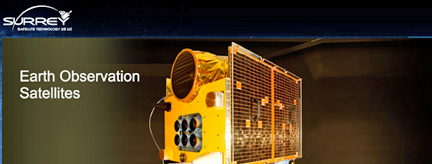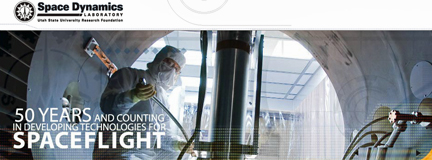
[SatNews] Colorado-based Surrey Satellite Technology US LLC (SST-US) has been awarded a contract by NASA’s Goddard Space Flight Center to conduct the Sustainable Land Imaging (SLI) Reduced Instrument Envelope Study.
Under the six-month contract, SST-US will investigate smaller and lighter alternatives to the two sensors currently flying on Landsat. The SLI Reduced Envelope Study focuses on investigating new technologies for imaging sensors that may be considered for the Landsat 10 program and beyond. NASA’s SLI Office has committed to researching a satellite, or constellation of satellites, that will be smaller and more economical than Landsat 8 while maintaining data continuity. Landsat 8 carries two imaging instruments—the electro-optical Operational Land Imager (OLI) and Thermal Infrared Sensor (TIRS).
“SST-US will leverage the Surrey legacy of success building innovative satellite systems to meet the demanding technical and economic specifications that NASA has in mind for future Landsat programs,” said SST-US COO Doug Gerull. “Of the six companies chosen as prime contractors by NASA to perform the SLI Reduced Envelope Study, we are pleased to be able to offer up our significant small satellite experience.”
Over the past 30 years, Surrey has successfully launched 43 small satellites, including the five-satellite RapidEye imaging constellation launched in 2008 at a total cost of less than $200 million.

For the Sustainable Land Imaging study, prime contractor SST-US has teamed with Space Dynamics Laboratory (SDL) of Logan, Utah, to examine the feasibility of merging existing Surrey electro-optical imager designs with a space-tested thermal imaging instrument developed by SDL. The two companies will collaborate on creating an integrated sensor that meets the combined reflective-band and thermal-infrared imaging capabilities of the Landsat 8 OLI and TIRS instruments while also satisfying the reduced mass, power, and weight requirements of the next-generation Landsat missions.
“To date, Surrey has developed and successfully launched 30 electro-optical imaging sensors, many of them in the size and power class requested by NASA Goddard,” said Gerull.
The SLI Office at Goddard has left the door open to the possibility of flying two separate reflective imaging and thermal-infrared instruments on the future Landsat satellites. As an alternative to one integrated sensor, SST-US and SDL will provide a design for two co-registered sensors flying on the same small satellite bus, similar to the current Landsat 8 configuration but meeting the reduced weight, mass, and power specifications required for future missions. To ensure the sensor designs developed by SST-US and SDL acquire medium-resolution imagery that maintains continuity with past and present Landsat data, the SST-US team includes Landsat scientists at Global Science & Technology Inc. (GST) of Greenbelt, Maryland. GST will assess the instrument performance characteristics of the proposed instruments and ensure onboard calibration strategies address operational requirements for next-generation Landsat satellites.
The SST-US infosite may be reached at http://www.sst-us.com/
The Space Dynamics Laboratory is accessible via http://www.spacedynamics.org/

